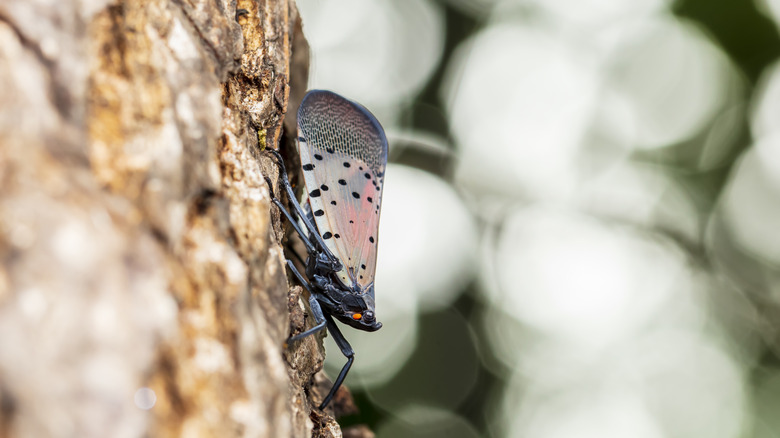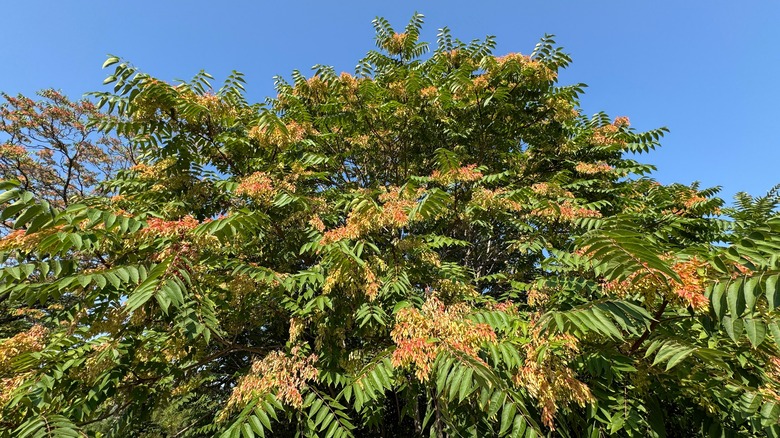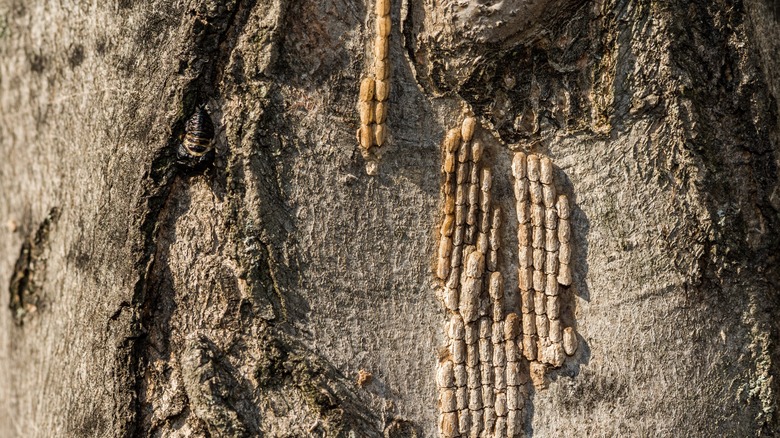Keep This Tree In Your Yard To Help Trap & Get Rid Of Pesky Spotted Lantern Flies
While it's rarely recommended to maintain an invasive tree species in your yard, there is one reason you might want to keep a specific tree around. Spotted lanternflies, the massively destructive insect that residents are told to destroy whenever possible, have a safe haven in a similarly invasive species: tree of heaven (Ailanthus altissima). Tree of heaven is native to China and Taiwan, but has since spread across the globe and was introduced to the U.S. in the 1700s. The tree is considered invasive due to its expansive and unforgiving root system, which can disrupt buildings, sidewalks, and water line pipes. The species is also able to displace local plants and keep new ones from growing nearby due to the chemicals it produces.
If you don't already have one in your yard, do not plant a tree of heaven for its lanternfly-attracting properties, as it will do far more damage than good. However, if this is a tree you already have, then it might be a useful tool for trapping and eradicating lanternflies from your garden. Not only can it help you confirm a lanternfly presence, but it will also allow you to kill them quickly and easily. So, if you identify a tree of heaven in your yard, before you understandably decide to get it removed, it's worth seeing if your specific tree is hosting a lanternfly population. Both are invasive, but it's possible to remove one with the help of the other.
How to identify a tree of heaven
If you're unsure whether you have a tree of heaven in your yard, this species is easily identifiable by its cantaloupe-like bark, multiple leaflets on each leaf, foul odor, and smooth leaflet edges. It can grow up to 80 feet tall. Removing the tree is an intricate process that will require herbicide and possibly professional assistance, but first, you can check to see if the tree is a host to spotted lanternflies.
To do so, examine the tree closely for signs of the insect, including all of its life stages: the tiny black nymphs with white spots and the adults with red, black, white, and brown wings. While 98% of spotted lanternfly eggs are in high spots (10 feet or higher) that we can't typically reach, you can still identify egg masses from a few main characteristics. They are about 1.5 inches long and usually brown or gray, with the eggs laid in rows. If you've spotted these types of masses or any life stages of the spotted lanternfly on your tree of heaven, then you most likely have an infestation.
Trapping lanternflies with a tree of heaven
Once you've established that you have a spotted lanternfly population, you can use simple tactics to remove them from your yard. The tree of heaven acts as a bait for the insects, making it easier to eradicate them. To remove adult lanternflies, you can simply knock them off your tree into a soapy bucket of water, which will kill them. If you have an egg mass within reach on your tree, you can scrape it off into a container of hand sanitizer or rubbing alcohol and dispose of the container in the trash.
If you have a tree of heaven in your yard and it does not have a lanternfly population, then tree removal is the right decision. This option also helps decrease the future lanternfly population, as the insects are not only drawn to these trees, but they largely rely on them for feeding and hosting their eggs. Usually, removing a tree of heaven involves applying herbicides and eventually cutting down the tree to the stump. Since it can be difficult to do successfully, you may want to consider hiring a tree removal service.


